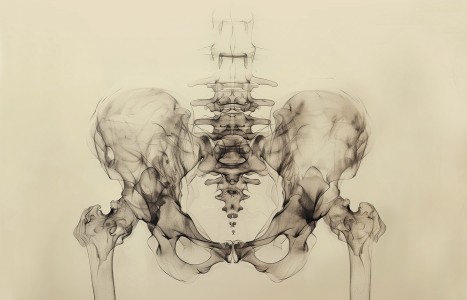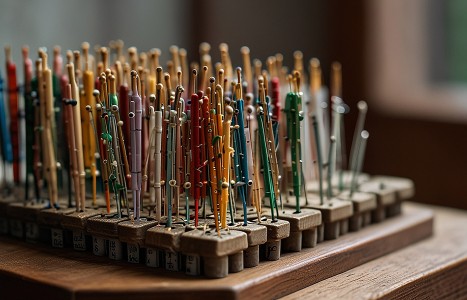People today want convenience, whether it be from their bank, credit card, favorite retail store, or restaurant. They demand it from the companies who hold their loyalty, including their health care providers (you). They don’t want to call and possibly be put on hold, and they want to use an app or schedule an appointment on your website. Here are three reasons your practice can gain by switching to online appointment scheduling.
Opening the Extraordinary Vessels (Pt. 2)
Editor’s Note: Part 1 of this article appeared in the November issue.
The he-sea points relate to the bowels, which is the area where the Divergent Channels are thought to diverge. The shu-stream point is associated with bi obstruction: lingering dampness causing heaviness and pain. The Nan Jing suggests combining these points with those on the hollows of the body, which are implied to be the joints.
The joints are often evocative of the Divergent Channels, as this is the site where they deposit pathology. However, the Extraordinary Vessels also enter the joints. The Qiao Vessels are especially associated with the joints, yet it’s interesting they are the only two Extraordinary Vessels that lack “opening points.” They begin with points located along their trajectory.
SP 4 (Gong Sun) opens Chong Mai. Its name, “Grandfather Grandson,” is evocative of our ancestry. It is a luo point located on the spleen channel. Its major function is the “rectification” of qi, which has a morality component to it that often involves forgiveness and acceptance.
The names of the luo points that “open” the Wei Vessels: P -6 (Nei Guan) and TH 5 (Wei Guan), the “inner” and “outer” gate, invoke an entrance which might also be a barrier. The Wei Vessels are often associated with one’s autobiography: the past and future. The major function of TH 5 is the resolution of toxins relating to the exterior. PC 6 rectifies qi counterflow.
All of these luo point functions provide clues as to what might need to be addressed before entering the Extraordinary Vessels. The basic functions of luo points in general are clearing heat, shen disturbance and counterflow (“rebellious”) qi. Each point provides more detailed insight.
The Extraordinary Vessels are organized according to depth significance. The Qiao Vessels are seen as the more superficial or postnatal. Interestingly, they don’t contain (or require?) “opening” points. The next depth of vessels are the Wei. They have “opening” points with the name’s “gate” to them.
The deepest of the vessels (Ren, Chong, Du and Dai) are opened by the luo points of tai yin and “yang” shu-stream points. Ren and Chong reveal themselves as vessels of nourishment: the “reservoirs” the Nan Jing suggests as part of the Extraordinary Vessel function. Du and Dai would thus appear to possess more of the “ditch” function of the vessels? This can be confusing to think about.
Du and Dai Mai are the two Extraordinary Vessels “opened” by shu-stream points.
The shu-stream point is directional by nature: from the exterior into the interior or vice versa. It directs the flow of qi. It is significant that Du is opened by shu-stream of Tai Yang, whose role is to bring things out very strongly. Dai Mai is opened by the shu-stream of Shao Yang, which is the pivot where energy can go either internal or external.
Du Mai is the emergence of the individual self. The movement away from the maternal matrix: the bond as represented by Ren Mai. SI 3 (Hou Xi) is called the “Back Ravine,” giving the image of "a stream flowing rapidly through a ravine.” Small Intestine is the yang of the heart: the “fire” of our spiritual expression. It is an understandable choice. Tai Yang is the most yang externalizing energy. The most interesting function of SI 3 might be its ability to “clear” the spirit-disposition or personality.
Dai Mai is opened by GB 41 (Zu Lin Qi), whose most interesting function is the ability to transform hot phlegm and affect the eyes and ears. The name of the point refers to “tears.”
Gallbladder is the bridge between postnatal and prenatal, being both a Zang Fu organ as well as a Curious Organ. Dai Mai, where unresolved issues from our current life can be deposited into the constitution for our next lives (or those of our offspring). Shao Yang is a level by which things become stuck: latent and lingering; whereas Tai Yang is full expression, which can sometimes lead to exuberant overexpression. Hot phlegm is often associated with conditions affecting the Curious Organs, of which GB 41 is particularly indicated.
Dai Mai is also classically the Belt Channel that keeps all other channels in place. It is the consolidation vessel. Thus, it has a dual nature. Shu-stream is an understandable statement as the Dai can relate to what we choose to hold onto and what we choose to move on from. Du Mai represents how much we express our individuality: maybe too much? Maybe not enough.
The directional movement aspect of the shu-stream is important to the Du and Dai Vessels. The expressive movement of our personalities for the Du and the way we are transforming our perceptions and experiences (our tears) for the Dai. Even though Dai is not opened by a luo point, part of its nature is as the ultimate “ditch.”
Above all, it is my belief that the questions are most important. The spirit of the Nan Jing, for example, shows us that these “difficult issues” have been debated for centuries. They are rich in metaphor and certainly not straightforward; nor are their answers written in stone. It is the evolving and evocative nature of the questions that gives life to our medicine and our treatments.



